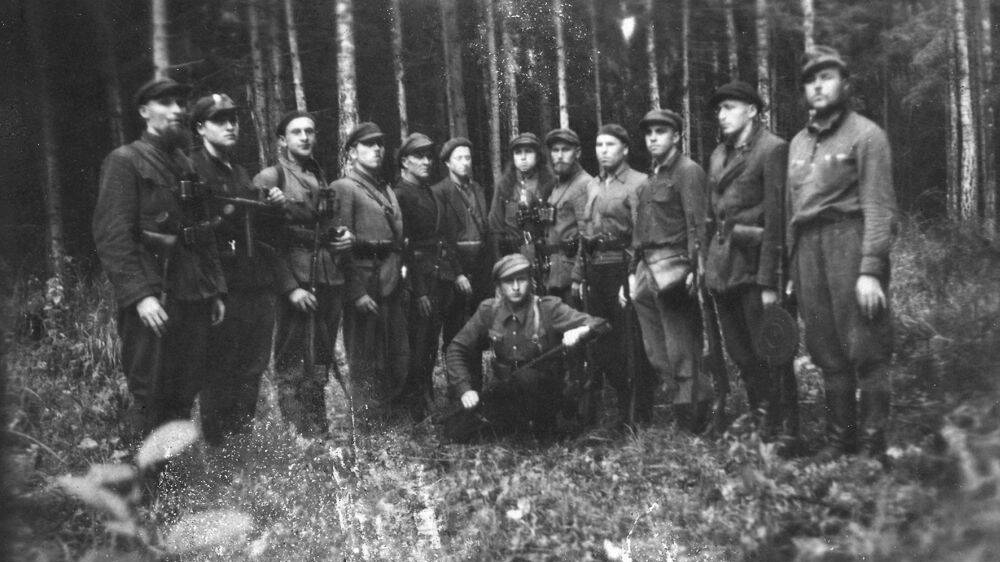Lithuania, like its Baltic sister nations Latvia and Estonia, is a beautiful country with a very harsh and little-known history during the last century. In May 1940, under the Ribbentrop-Molotov Pact, the Baltic countries were occupied by the Soviet Union and annexed a month later. As in the rest of the territories occupied by the USSR, the Soviet repressive apparatus launched a campaign to eliminate alleged “political opponents” and thousands of Baltic citizens were murdered and deported. Thus, were born the first partisan movements to fight the occupation, the “forest brothers”. After the German invasion in June 1941, many of these partisans joined the new occupier to fight the Soviets, while others remained in the forests. The Red Army’s victory and the new occupation revived the partisan movement, which remained active until the 1950s. The USSR implemented a system of “Sovietisation” of the Baltic states with much larger deportations than during the first occupation and the arrival of Russian citizens in the Baltic states (according to the occupation museum in Riga, 800,000 Russians settled in Latvia within 10 years). The total number of deportees between 1944 and 1953 is estimated at more than half a million people: 124,000 in Estonia, 136,000 in Latvia and 245,000 in Lithuania. Twenty thousand Lithuanians, including 5,000 children, were to die as a result of these deportations.
Last week, I saw some photos of Lithuanian politician Vytautas Sinica with an old man in a house in the countryside. A simple man praying in front of some graves. I asked Sinica who this man was and he replied that he was a legend in the partisan movement, Jonas Kadžionis, whose nickname was “Bėda”, meaning “Trouble”, a name very appropriate in view of his history. Kadžionis was born on 29 January 1928, is 93 years old and is one of the few forest brothers still alive: “I have lived so long probably because, as Monsignor Svarinskas says, God has not counted the years I spent in the gulag”.
Jonas Kadžionis joined the partisans on 25 May 1948 after being drafted by the Soviet authorities, his parents had been deported and he was unwilling to serve in the army of occupation. Between 1948 and 1949 he was a member of the Lithuanian Freedom Struggle Movement in the Butageidis company in the Algimantas district. From the beginning of November 1949 (when the active partisan fighting in the area ceased), he was the commander of the Butageidis Company. Between 1949 and 1953, Kadžionis was hidden in the forest bunkers in the Kavarskas-Dabužis-Traupis area. There he met his wife, also a partisan since May 1948, M. Gedžiūnaitė-Kadžioniene-Sesute, and in 1953 their son was born. On 22 May 1953 both were captured in an ambush near the village of Putriškiai and sentenced by the Baltic Military Court on 12 September to 25 years’ imprisonment each. On 2 February he was deported to Siberia to serve his sentence.
Petras Plumpa, one of his fellow camp members, noted that Kadžionis could have shortened his imprisonment by a full decade: “He only had to write a plea for clemency and repent of his resistance to the Soviet occupation, but Jonas was not willing to lie. For him the truth was more important than life”. After refusing to ask for pardon and repenting, Kadžionis was sent to Kamyshlag (Omsk region, Siberia) from 1954 to 1958, where he worked in a wood factory. On 1 February 1958, he was transferred to the construction of an oil refinery in Taishet where he stayed until November 1961, then to the Dubravlag 11, 7 and 17 camps in Mordovia from 1961 to 1972, and to the Ural camp Kurchin 36 (Chiusovoy, Perm region) from 1972 to 1978, working in a sawmill.
Kadžionis has always pointed out that he was able to resist imprisonment thanks to prayer: “The partisans made a great sacrifice for Lithuania and for the Catholic Church. What gave me strength? Prayer. That prayer that has been with me since I was a baby. Every day I saw my parents kneeling down to pray, before and after meals. Just as you can’t start soup without a spoon, you can’t eat without praying. Among the Lithuanian prisoners there were many priests, which, in the partisan’s words, allowed us to “lead a real religious life”. This did not go unnoticed by the camp guards and they separated the priests (Catholic and Orthodox) from the other prisoners, “because they were harmful to the people”.
The 25 years in the Soviet camps did not subdue his spirit, as was evident on his return home, as Eugenijus Peikštenis, director of the Museum of Genocide Victims, explains: “After his release, Jonas refused to wear civilian clothes and travelled half the Soviet empire in his prisoner’s uniform. When the guards tried to object, Jonas replied that there was no law against travelling in that uniform. He said the same thing to the policemen who tried to arrest him in Moscow”. On his return to Lithuania, however, the authorities would not leave him alone and forced him into exile in 1983 in the Kaliningrad region. He was not able to return to his homeland until 1989.
In 1998, Kadžionis was promoted to the rank of lieutenant, and received various honours and commemorations. In the summer of 2009, he found the location of his old bunker in the Dabužiai forest and restored it. He also went about locating the remains of his former comrades-in-arms who fell in the forest and carved a cross for each of them. Last year he published his memoirs “Per skausmo pelkes” (Through the swamps of pain). Jonas Kadžionis remains a simple and humble man, beneath which dwells the unwavering spirit of a true hero: “If we cherish honesty, justice, love and truth, we will achieve personal happiness, we will do our duty to God and our Homeland, and we will acquire a pledge of grace with which we will go to eternity. May God bless Lithuania and its Catholic Church”.


